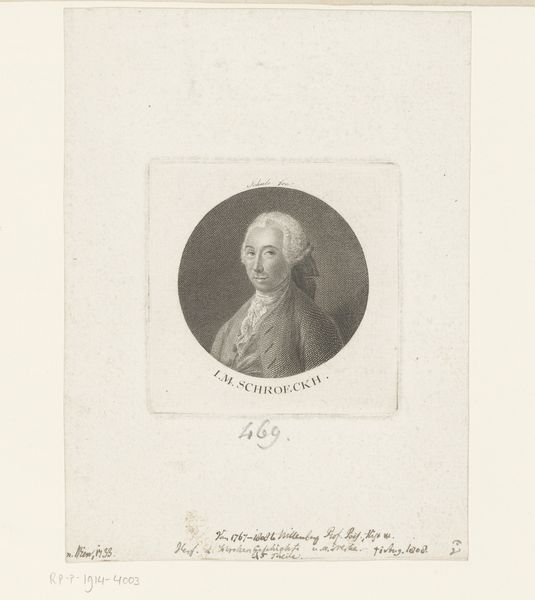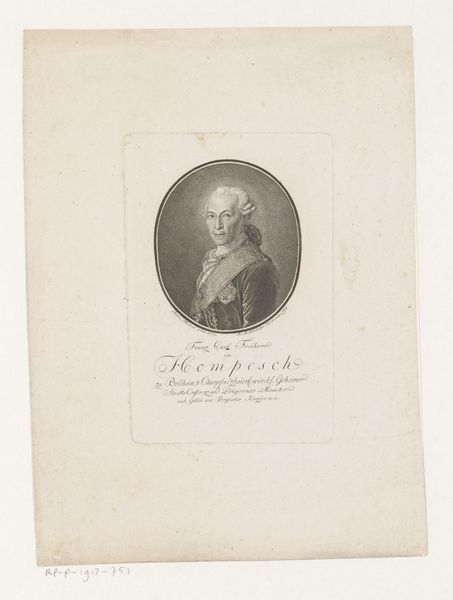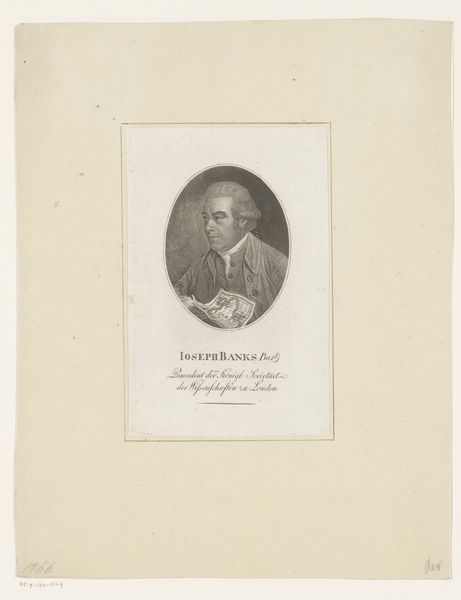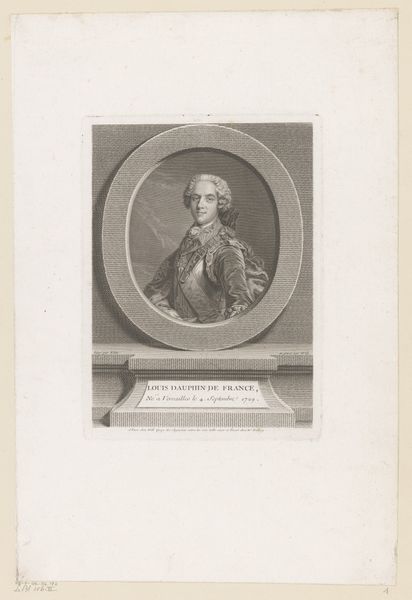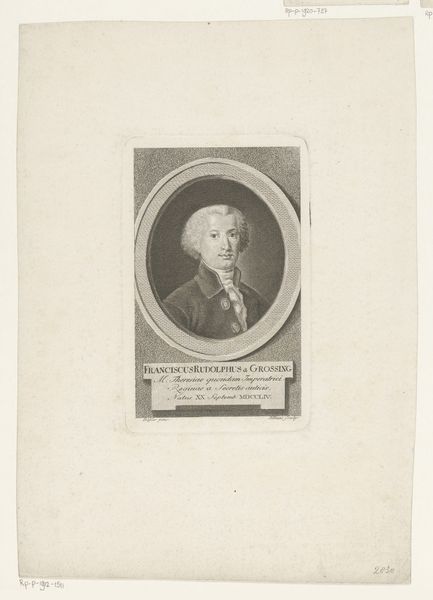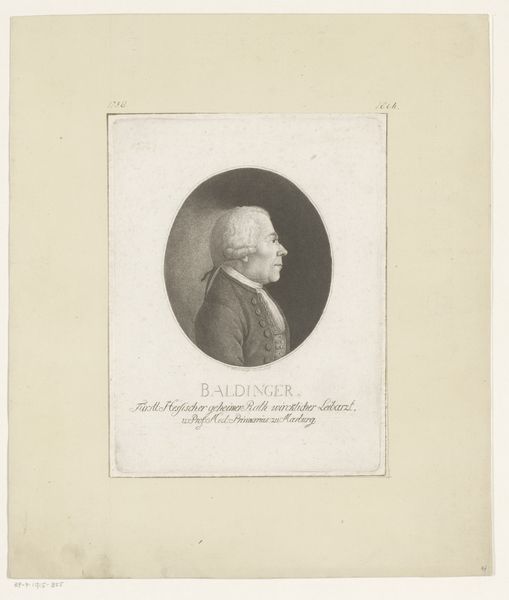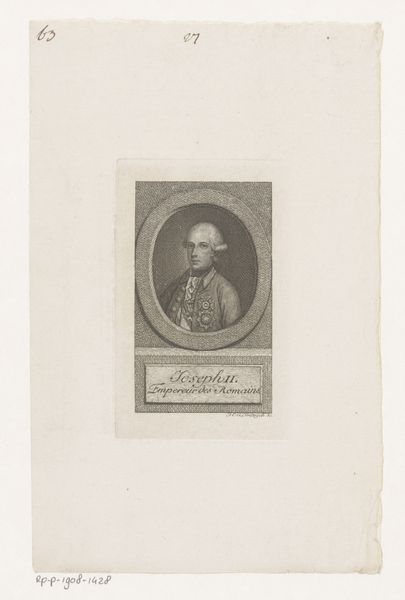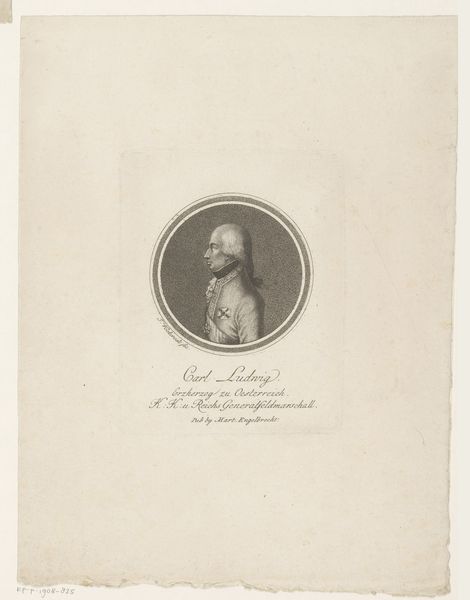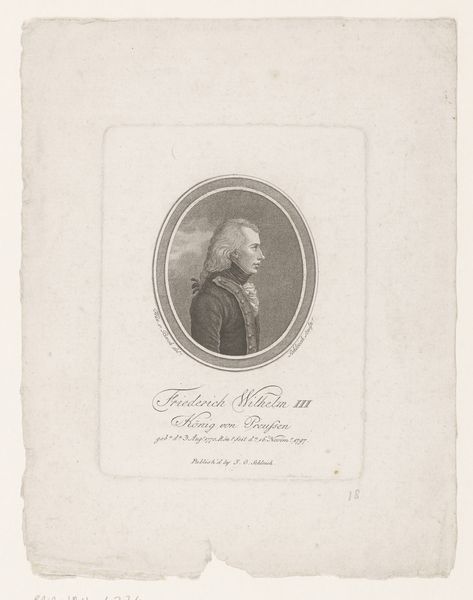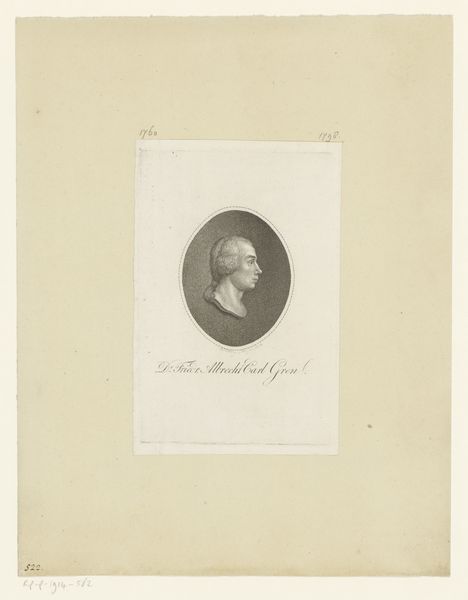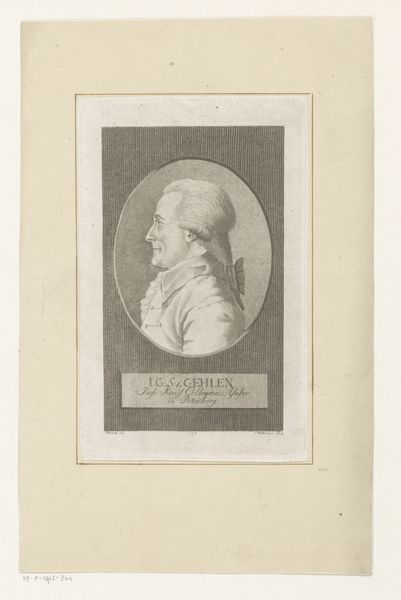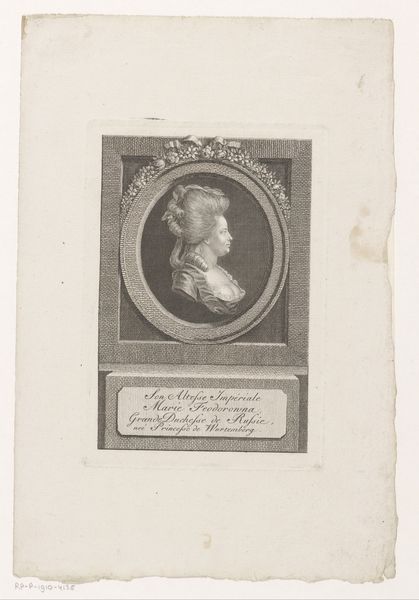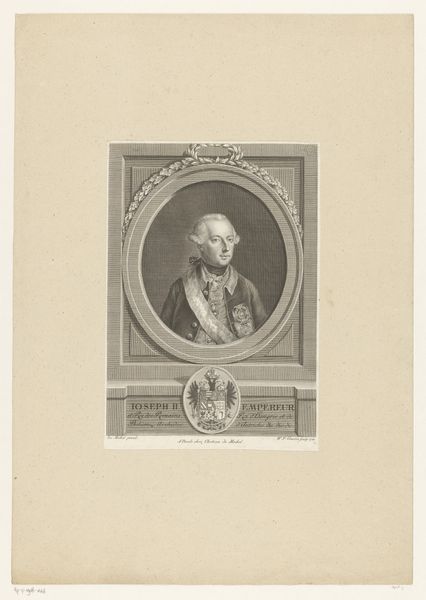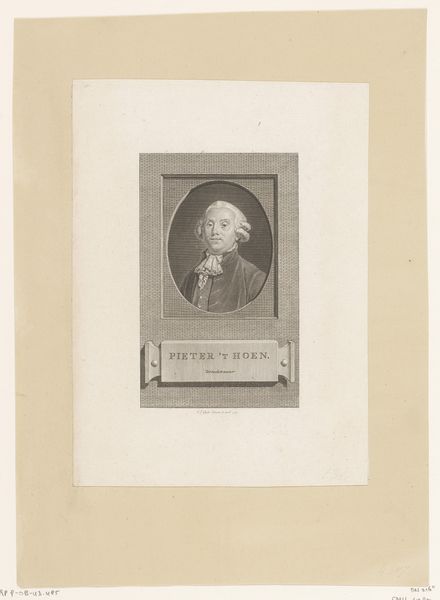
Portret van Ferdinand III Jozef Jan-Baptist, groothertog van Toscane 1780 - 1880
0:00
0:00
theodorvincenzpoll
Rijksmuseum
print, engraving
#
portrait
#
neoclacissism
# print
#
history-painting
#
engraving
Dimensions: height 152 mm, width 98 mm
Copyright: Rijks Museum: Open Domain
Editor: This is a portrait of Ferdinand III, Grand Duke of Tuscany. It's an engraving, so a print, dating from between 1780 and 1880. I'm struck by how formal and official it feels, especially with all the text beneath the portrait. What do you see in this piece? Curator: Well, I see a visual document deeply embedded in the power structures of its time. Look at the Neoclassical style: the idealized portrait, the controlled lines, the carefully inscribed titles listing his noble claims… It's all carefully constructed to reinforce his authority. How do you think this image functions within the broader political landscape of late 18th/early 19th century Europe? Editor: It seems like pure propaganda, designed to legitimize his rule through visual representation. It’s interesting how much emphasis is put on lineage, almost as if trying to justify his position through bloodline rather than merit. Curator: Precisely. This wasn’t simply about representation; it was about reinforcing a social hierarchy that was already being questioned, wasn’t it? Remember, the Enlightenment and revolutionary ideas were challenging these inherited power structures. This portrait becomes an assertion of traditional authority against a backdrop of social upheaval. Can you see how the style itself—the rigidity, the formality—serves that purpose? Editor: I do, now that you mention it. The clean lines and formal presentation contrasts a more emotive or naturalistic style and highlight the significance of this powerful figure.. It feels like it's actively pushing back against the changing social attitudes. Curator: Absolutely. And by understanding that, we can begin to unpack the complex relationship between art, power, and social change in that era. These aren't just pretty pictures; they're ideological battlegrounds. Editor: It's fascinating to consider it as a response to social anxieties. Thanks for making me see it that way. Curator: It was my pleasure; you asked all the right questions to get there.
Comments
No comments
Be the first to comment and join the conversation on the ultimate creative platform.
